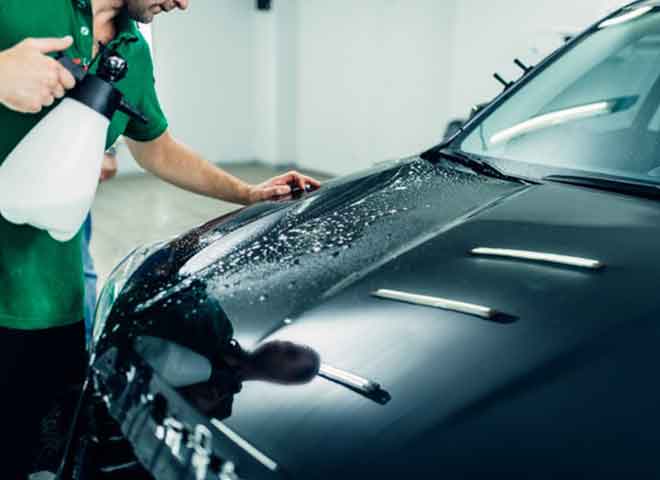• Please note that re-positioning of the film is only possible in the stage of positioning and low squeezee pressure. If done in a later stage small marks or lines might remain visible in the film surfaces.
• For curved areas, it is necessary to firmly pull and stretch the film in order to conform the film around the surfaces. It is recommended to stretch the material without applying any heat, making use of the flexibility of GPPF film.
• To avoid the wrinkles / stretch marks and shock lines steamer can be used at curved surfaces.
• To avoid water marks use first soft squeezee and then use hard squeezee.
• Alcohol Solution (TS) will be needed if the film part requires stretching. Slightly lift the film and spray at the centre of the adhesive side with the Alcohol Solution. Properly position the film and squeezee. The Alcohol Solution washes away the soap and softens the adhesive to allow an instant bond. Keep the adhesive wet during application to facilitate repositioning and avoid stop line.
• Make sure not to overstretch the film. Excessive over stretch may create stretch marks in to the face film. Repositioning at a curved area at latter stage and over stretch may create stretch marks.
• After installation, cut extra PPF film from the edge of installation area.
• After installation of PPF, clean the installation area by water and clean the surface by soft towel (Lint free microfiber towel). Clean residual SS / GIG Solution before drying to avoid water marks.
• After installation of Paint Protection Film, do not wash (with water spray / jet) the car at least for 72 hrs in summer and 7 days in winter.
• Use Installation Gel only on Adhesive side and not on Self-Healing side to avoid Gel marks.





